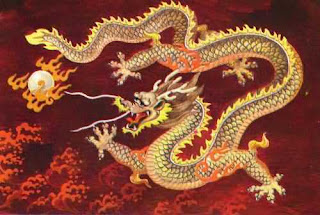


History:
Vietnamese Water Puppet originated from the Red River Delta of Vietnam in the tenth century. Some of the earliest troupes are in Nguyên Xá commune, Đông Hưng district, Thai Binh province. Water puppetry is deeply imbued with the cultural characteristics of the people of this area. This unique art first appeared around the 15th century, when post-harvest, artists who were also farmers would gather to perform and relax. The custom remains today in many localities in the Red River Delta such as Dao Thuc, Phu Da, Dong Ca, Nguyen Xa, Dong Ngu, Nhan Hoa and Nam Chan.
When water puppetry became more popular, villages competed against each other with their puppet shows. This led puppet societies to be secretive and exclusive, including an initiation ceremony that involved drinking rooster blood.
So far this art form has been unique to North Vietnam. Tourists can enjoy this kind of art all days in a week at Thang Long Puppet Theatre, which is the most well known one in Ha Noi.
Performance
For over a thousand years, performers in Vietnamese Water Puppet Theater’s feet have always suffered in cold and wet condition. Water puppetry is performed in a chest-deep pool of water, with the water's surface as a stage. The puppeteers stand behind a screen and control the puppets using long bamboo rods and string mechanism hidden beneath the water surface. 
The puppet is carved out of wood and often weighs up to 15 kg. A large rod supports the puppet under the water and is used by the puppeteers to control them. The appearance is of the puppets moving over the water. The puppets enter from either side of the stage, or emerge from the murky depths of the water. In the past when the rice fields were flooded the villagers would entertain each other using this puppet form.
A traditional Vietnamese orchestra provides background music accompaniment. Singers of Cheo (a form of opera) with origin in North Vietnam sing the songs which tell the story being acted out by the puppets. Performances of up to 18 short scenes are usually introduced by a pig-tailed bumpkin known as Teu, and accompanied by a small folk orchestra. The musicians and the puppets interact during performance; the musicians may yell a word of warning to a puppet in danger or a word of encouragement to a puppet in need.
Along with singing the atmosphere, while the decorations set the stage for each particula, traditional musical instruments like drums, wooden bells, cymbals, horns, two-string Chinese violins and flutes create r style of water puppetry. Researcher Nguyen Huy Hong believes that water puppetry combines sculpture, architecture, painting, music, stage and literature.
Content
The theme of the skits is rural and has a strong reference to Vietnamese folklore. It tells of day-to-day living in rural Vietnam and Vietnamese folk tales that are told older generation to younger generation. Of which stories of the harvest, of fishing and of festivals are highlighted.
The water also provides the best setting for the puppeteers' theme: day-to-day village life. Water puppets bring wry humor to scenes of farming, fishing, festival events such as buffalo fights, and children's games of marbles and coin-toss. Fishing turns into a game of wits between the fisherman and his prey, with the fisherman getting the short end (often capturing his surprised neighbor by mistake). Besides village life, scenes include legends and national history. Lion dogs romp like puppies while dragons exhale smoke and shoot sprays of water at the audience. Teu, a pig-tailed bumpkin, is the character who usually plays the role of introducing the performances. The introduction is always accompanied by a small folk orchestra. Spotlights and colorful flags adorn the stage and create a festive atmosphere.
Legends and national history are also told through short skits. Many of the skits, especially those involving the tales of day-to-day living, often have a humorous twist.
Water puppetry has always gone hand in hand with festivals. Each Lunar March 13, Bo Duong villagers hold village festival to commemorate their tutelary god. Aside from worship, the festival is also an opportunity for villagers to relax by watching water puppetry, taking in fireworks displays, flying kites and entering cock-fighting contests. The festival always attracts thousands of attendants. Village festivals are great wind down for farmers and artists alike.
src="http://pagead2.googlesyndication.com/pagead/show_ads.js">
















































